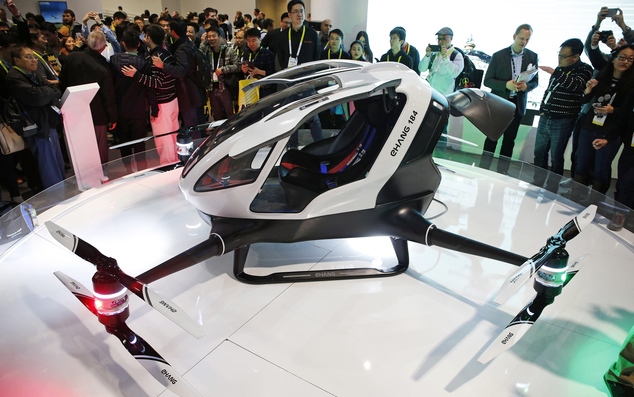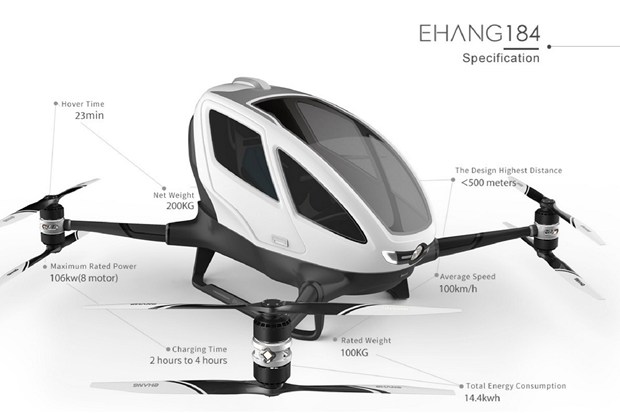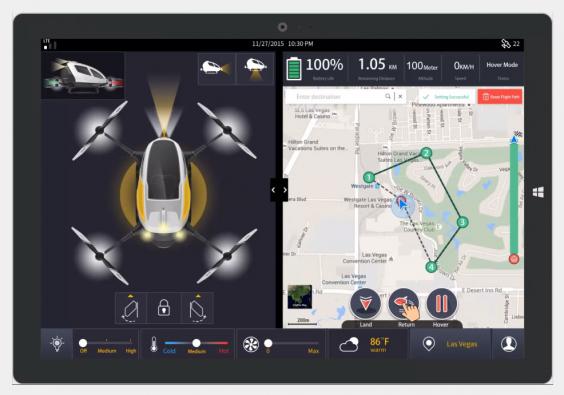Chinese drone maker Ehang Inc. unveiled what it calls the world’s first drone capable of carrying a human passenger.
A Chinese company has unveiled the world’s first commercially available passenger drone at the Consumer Electronics Show (CES) in Las Vegas. The Ehang 184, created by Guangzhou-based company Ehang, essentially looks like a larger version of a quadcopter drone – except with a small cockpit in the middle capable of carrying a single passenger.
It’s an autonomous human-sized drone that promises to ferry passengers through the air without asking them to ever touch the controls. EHang claims the drone can lift and transport humans weighing 220 pounds for 23 minutes on a single battery charge. It navigates via EHang’s app, which allows users to input their destination into a 12-inch touchscreen before takeoff.
“Passengers don’t need to learn how to fly it, they don’t need get to a pilot’s license,” EHang cofounder Derrick Xiong said in an interview. ”They just need to press a button and then it vertically takes off, flies from point A to point B, and lands.”

The all-electric drone has four arms, eight propellers, eight motors and two sets of sensors — as well as a redundancy to ensure safety in bad weather (or perhaps in case one set of sensors fails).
Its website says that although the device is thunderstorm-proof, the command center will prohibit the vehicle from takeoff during extreme weather conditions. The way it works, according to EHang, is that the passenger punches their destination into a mobile app. Then, they have only two possible commands: “take off” and “land.”
EHang said the vehicle is primarily designed for traveling short-to-medium distances — around 10 miles — and will fly at around 60 miles per hour.

For safety, Xiong said the 184 won’t use computer vision to sense objects and avoid them. Instead, Ehang will rely on a fail-safe system that will automatically land the vehicle if it senses that any component on the machine is damaged. EHang will also have a command center that employs people to make sure everything is safe — sort of like an air traffic controller at an airport. The command center will monitor every 184 in the air 24/7 and the company plans integrate with existing air traffic controller operations. The command center would, for example, make sure that a 184 doesn’t take off in extreme weather conditions. Still, having no sense-and-avoid technology in an autonomous machine carrying people around seems like a mistake.





